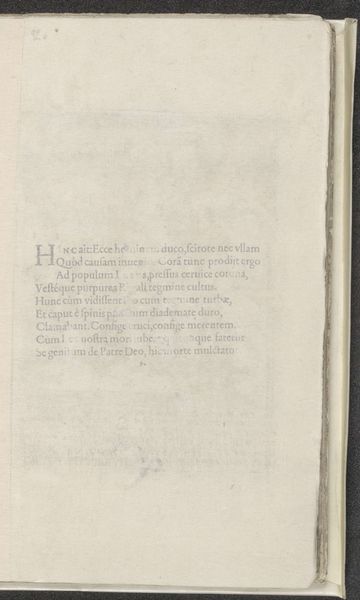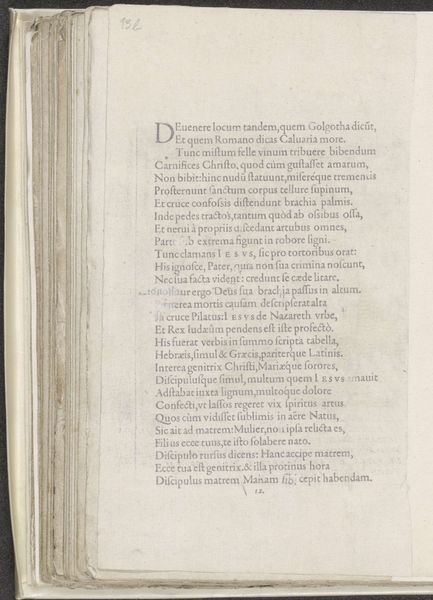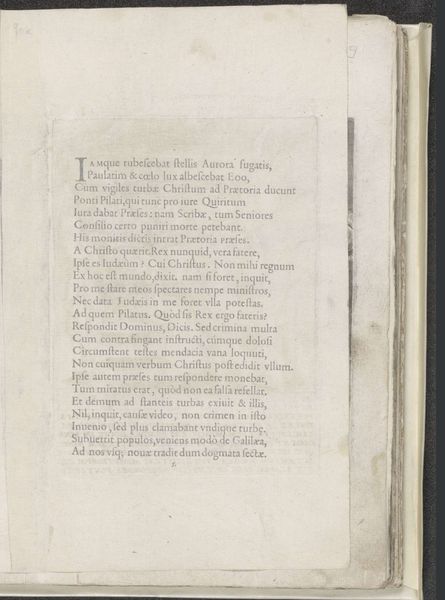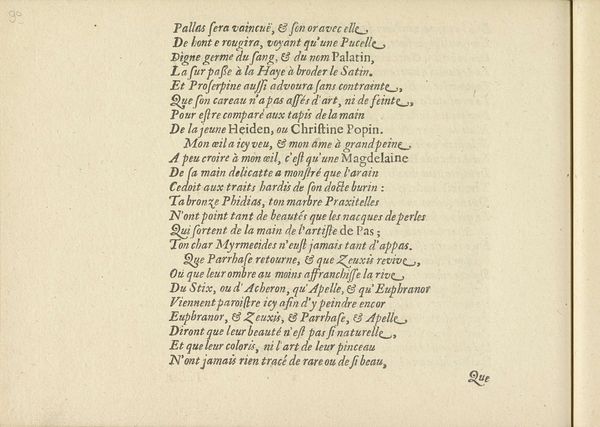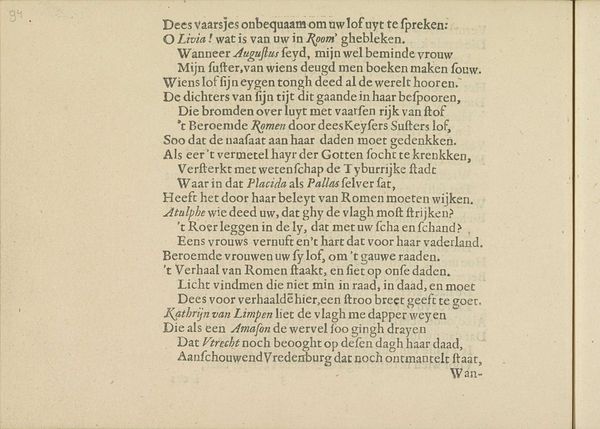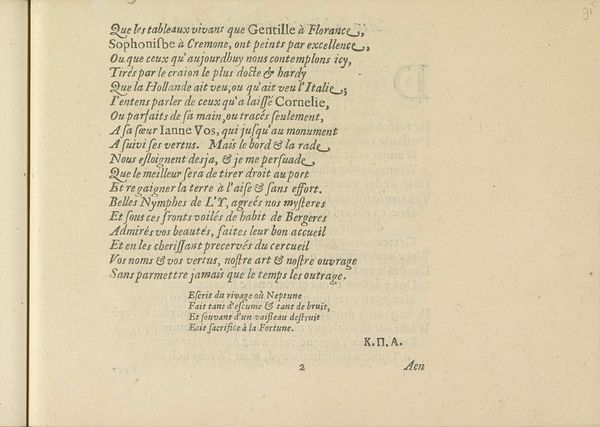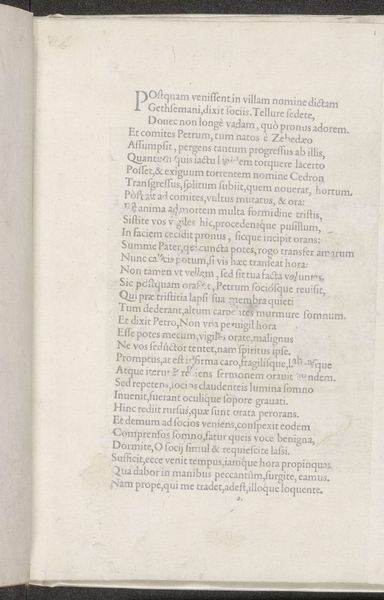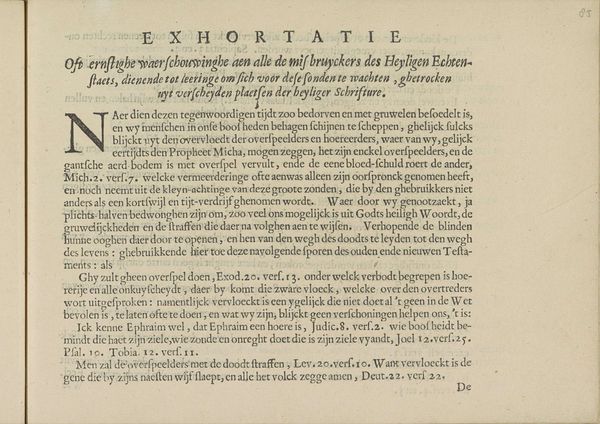
print, paper, typography
# print
#
paper
#
11_renaissance
#
typography
Copyright: Rijks Museum: Open Domain
Curator: This artwork, dating back to 1572, is titled "Tekst over de Geseling van Christus." It’s a print, most likely from a book, executed in typography on paper by Domenico Mancini. My immediate impression is of hushed reverence. The starkness of the text against the paper invokes a contemplative mood. Editor: I see a social commentary—it's interesting how the print medium allows the narrative to be distributed more widely. The text itself, being over "The Flagellation of Christ," highlights the way political narratives frame the event, shifting culpability. The stark typography adds to that sense of somber reflection. Curator: Yes, typography itself can be deeply symbolic. Here, the disciplined, almost relentless rows of text, remind me of the inexorable workings of fate, or even divine law. It lacks ornate decoration, thus centering the narrative content above aesthetic display. Editor: Agreed, the lack of embellishment drives the point home. But that makes me wonder, who was the intended audience? A more learned elite? Was this image meant to incite reflection among civic leaders regarding law and judgment during that era? Curator: It could function as a moral instruction piece—drawing a sharp contrast between righteous suffering and judicial corruption. Think of the early Renaissance fascination with classical rhetoric; Mancini is, in essence, using text as his brush, manipulating viewers’ perspectives with strategic pronouncements and direct language, compelling them to confront difficult moral decisions. The Latin would certainly indicate an educated audience, confirming your assessment. Editor: It shows us, I think, the potency of printed text as an influential element of Reformation era thought. The narrative control exercised here reveals the sociopolitical underpinnings of religious depiction and their continuing manipulation of audiences. Curator: Indeed. Ultimately, this artwork invites us to think critically about historical and cultural context by connecting word and symbol through the psychological prism of a pivotal biblical scene. Editor: A great point—it's a crucial piece that uses history itself as a tool for influencing moral conduct.
Comments
No comments
Be the first to comment and join the conversation on the ultimate creative platform.


